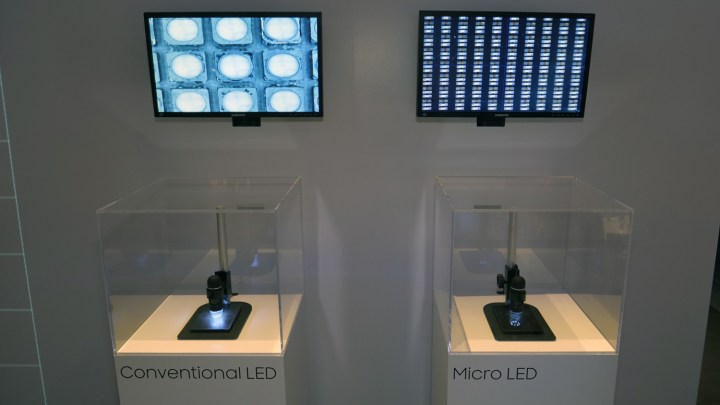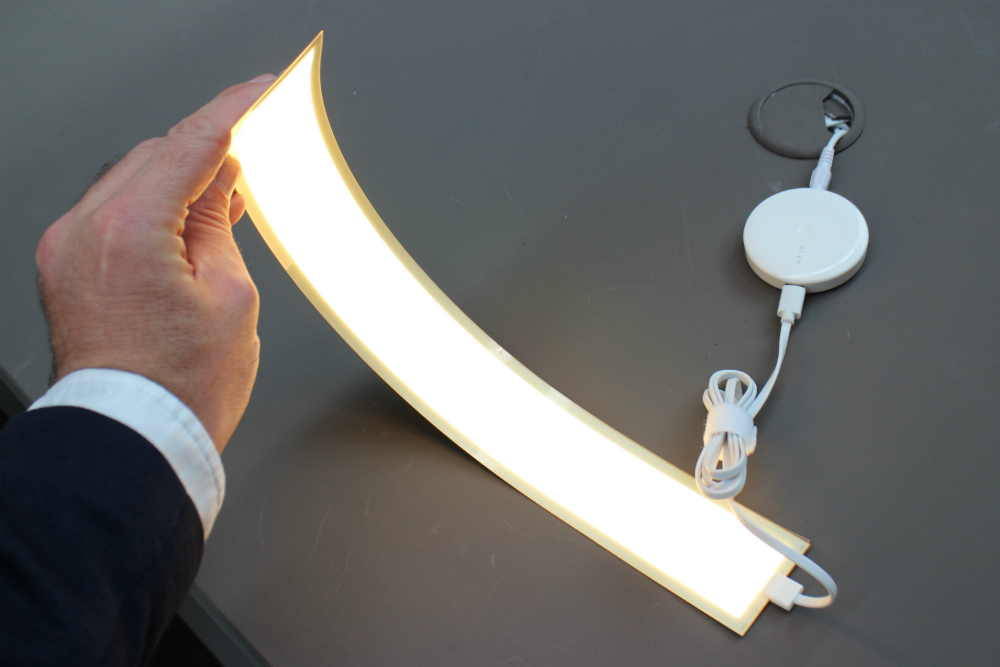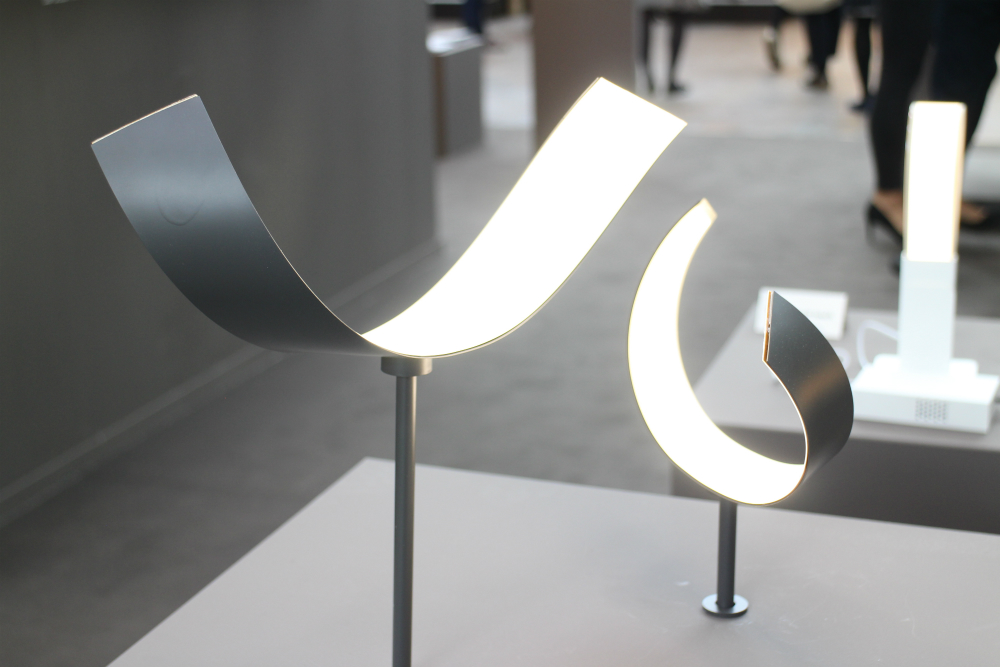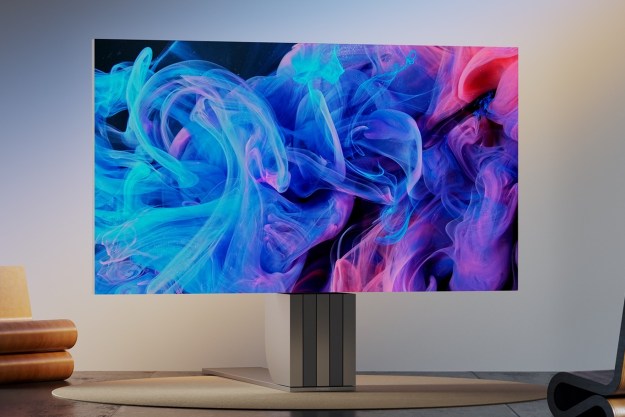
The Wall and its screen represent the first product from Samsung using MicroLED technology. The Wall not only offers glorious picture quality and contrast, but it’s also modular (built from several smaller panels mashed together) and, according to Samsung, scalable to larger – and, eventually, smaller — sizes. The display is nothing less than a direct shot across the bow of OLED screens (and those who produce them), which have been dominating the TV conversation for the past few years.
Manufacturing millions of LED lights at the pixel level is no easy task.
Emissive is the key tech word here. OLED is heralded for its ability to emit light and color at the pixel level, allowing each pixel to turn on and off individually, and therefore, create perfect black levels and formerly unmatched contrast. Unlike the TVs we ubiquitously call “LED” now, which use LED backlights shone through quantum dot sheets, color filters, and numerous other layers to produce images, Samsung’s new MicroLED technology is also emissive, just like OLED, and able to match OLED’s pefect black levels and lightning-fast response time.
What’s more, MicroLED is brighter than OLED, and, since it isn’t an organic compound, is more stable. In other words, MicroLED’s red, green, and blue pixels don’t wear down over time, whereas OLED’s different colors wear down at different rates over time.
On paper, MicroLED looks like it could be an OLED killer, but while MicroLED may be snatching headlines left and right, OLED isn’t going anywhere anytime soon. This is OLED’s time to rule.
MicroLED: Tough to scale, tougher to make
A number of big industry players are betting on MicroLED as the next big thing in displays. Samsung is now in, and Apple is so bullish on the tech that it recently purchased MicroLED manufacturing firm LuxVue for potential implementation in future Apple Watches (which currently use OLED displays) and iPhones. According to Patently Apple, Apple has even filed a patent that could potentially employ MicroLED tech for a folding iPhone. And MicroLED’s promise of brighter screens, wider color gamut, and modular construction for screens of all sizes may make them extremely competitive in the future.
However, MicroLED is still a nascent technology. The displays are extremely pricey and difficult to manufacture, much more so than OLED displays at this point, because they require constructing and placing millions of tiny, individual lights working together. And as you might imagine, manufacturing millions of LED lights at the pixel level for a single display is no easy task. An early experimenter in MicroLED, Sony has essentially put the technology on hold when it comes to TV displays — for the moment anyway.
According to LED Inside, Sony’s first iteration of a MicroLED display back in 2012 required the production of 6.22 million individual LEDs, which led to poor energy efficiency, and yield rates that are completely impractical for any kind of consumer product. While the process has progressed since then, MicroLED remains extremely difficult to produce on a large scale.
It has also been difficult for companies to scale MicroLED displays down for use in popular TV sizes. Samsung’s massive “The Wall” TV is an impressive experiment, but it was derived from the company’s cinema tech, meant for massive screens in commercial theaters, and isn’t practical for smaller displays in its current iteration.
For one thing, looking closely and/or off axis, The Wall reveals small lighting barriers around each module – you can see each individual panel stitched together like a patchwork quilt. For another, while Samsung says the tech can be scaled down thanks to its modular design, the company can’t yet do so while keeping the display’s pixel density high enough for 4K (or, eventually, 8K) resolution. And even if it is possible to scale down, it’s likely that Samsung’s method for shrinking LED tech into a screen you could fit in your home (and actually afford to buy without a second mortgage) is impractical to put into production anytime soon from a simple cost analysis standpoint.
OLED flexibility
Meanwhile, OLED is seeing significant breakthroughs as companies continue to experiment and create new and better displays, from affordable TVs that far outperform their traditional LED counterparts, to experimental displays that do things you never imagined your TV could do outside of a sci-fi movie.
As Samsung basked in the literal glow of its massive wall of light, another Korean tech giant, LG Display, was quietly unfurling its own semi-secretive display tech, a much smaller but similarly impressive show of 4K force in the form of a 65-inch, rollable 4K OLED display. It’s this flexible form factor that’s poised to take the reins of all things screens in the very near future.
In July 2015 we interviewed then-VP of Technology Commercialization for Universal Display Corporation, Janice Mahon, who told us about a seemingly magical little device called the Universal Communications Device (UCD). Comprising a small, pen-like canister with an ultra-slim, high-resolution OLED touch screen rolled inside, the UDC will allow users to stream video, source directions, interface with friends and colleagues, and much more, all with a battery that lasts for days at a time. It’s still in its early stages, but the device is real, it has been used, and it could someday replace your phone, wearable, and most of the other tech you cart around.
We’ll see foldable OLED displays, wearables and devices integrated into clothing, shirt cuffs and backpacks.
Universal Display Corporation is among the many companies mapping out the future of OLED display technology. The company has been working on rollable OLED displays for over 15 years, putting its designs light years ahead of MicroLED when measured in tech time. And while the company admittedly has cause for pumping up its own tech, it doesn’t take much foresight to see that this kind of technology will be a boon to the display industry.
“We’ll see foldable displays,” Mahon told us, “smartphones that go back to clamshells opening up to a full-sized screen … wearables like wrist based displays, and devices integrated into clothing, shirt cuffs, (and) backpacks. It has the potential to cross a variety of applications.”
And really, that’s just the beginning.
OLED versatility
Because OLED uses organic luminescent material in a cell rather than a piece of semiconductor hardware, OLED screens can be used in ways MicroLED can’t, including transparent OLED (TOLED), which we see in retail display and LG’s own smart refrigerators, and phosphorescent OLED (PHOLED), which allow for extremely energy efficient displays.
Plus OLED material can be printed out on plastics, which makes them more flexible (see above) and increasingly affordable.
Perhaps most importantly, because all kinds of OLED displays are so much easier to make than MicroLED displays, they’re already becoming ubiquitous in the commercial market. And pretty soon, they’ll have taken over the TV market as well.
While OLED TVs remained just out of reach to most consumers in there earlier years, they have come down in price dramatically. It’s very likely we’ll see a 55-inch 4K OLED TV on sale for less than a thousand dollars in the next year or two. And for those who’ve seen what OLED can do when it comes to picture quality, that’s exciting.
All for the best
Of course, it’s not all sunshine and rainbows for OLED tech. There are still barriers to overcome before those futuristic screens described above hit the market: Along with the ever-present battery issues that tiny, flexible OLED displays will face, engineers still need to figure out how to miniaturize the guts of OLED tech before we have those screens we can roll up and toss in our backpack.
And even when it comes to traditional TVs, like the old plasma displays, there are also still some lingering concerns with OLED longevity, including burn in concerns under extreme use situations, as well as uneven color degradation on the long term. The latest TVs we’ve seen haven’t shown any issue with that under normal use in the near term, but OLED is still too new for those fears to be fully brushed away.
For now, MicroLED technology is emerging as a very cool (and very welcome) new technology in a field where OLED screens are still pricey to buy, and in some ways, more fragile than trusty old standard LED or even MicroLED displays.
Still, we can see the OLED future slowly inching toward us. In addition to LG Display’s new 65-inch rollable OLED, LG electronics’ Wallpaper OLED TV is already in its second iteration, sticks on the wall via magnets, and offers as fine a picture as anything LG makes. Rollable OLEDs seemed like fantasy just a few short years ago, but our time at LG Display’s booth at CES 2018 has us extremely excited about where the technology will go in the next couple of years — so much so that we think rollable OLED is something you will be able to buy in 2019.
The future of OLED is one of dominance. It’s a technology that has taken years to develop, with LG leading the charge, and it’s too far ahead of its competition to be overtaken in the next few years – not even by MicroLED.
Editors' Recommendations
- Sony debuts the Bravia 9, its brightest 4K TV ever, alongside new 2024 models
- TCL’s giant 115-inch QM89 is the world’s largest 4K mini-LED TV
- The Apple TV remote finder isn’t as good as a case and AirTag
- Samsung shows off the first two 77-inch QD-OLED 4K TVs at CES 2023
- Samsung debuts world’s smallest and most affordable microLED TV at CES 2023








